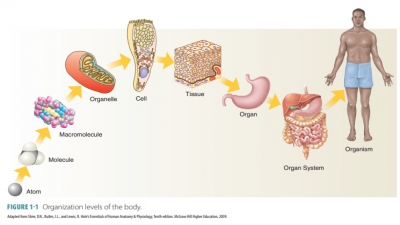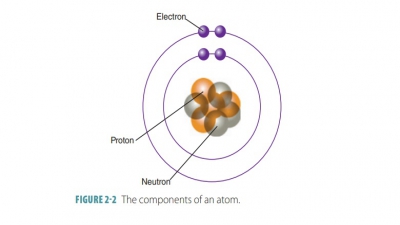Summary
| Home | | Anatomy and Physiology | | Anatomy and Physiology Health Education (APHE) |Chapter: Anatomy and Physiology for Health Professionals: Levels of Organization : Introduction to Human Anatomy and Physiology
Anatomy is the science of body structures and the relationships among these structures.
Summary
Anatomy is the science of body
structures and the relationships among these structures. Physiology is the
science of body functions. The human body consists of six levels of structural
organization: chemical, cellular, tissue, organ, system, and organism levels.
Certain processes that distinguish life processes from nonliving things include
metabolism, responsiveness, movement, growth, differentiation, and
reproduction. Essentials for life include body boundaries, movement,
responsiveness, digestion, metabolism, excretion, reproduction, and growth.
Survival requires nutrients, water, oxygen, atmospheric pressure, and the
maintenance of adequate body temperature. Homeostasis of the body is controlled
by receptors, effectors, and a set point that is achieved by the control center
of the body (which primarily uses the nervous and endocrine systems).
The abdomen and pelvis are
divided into nine abdominopelvic regions: left hypochondriac, epigas-tric,
right hypochondriac, left lumbar, umbilical, right lumbar, left iliac
(inguinal), hypogastric, and right iliac (inguinal).
Body cavities are mainly divided
into two sections: dorsal cavity and ventral cavity. The dorsal cavity is
subdivided into the cranial cavity (which contains the brain) and the vertebral
cavity or canal (which contains the spinal cord). The meninges are protective
tissues that line the dorsal body cavity. The ventral body cavity is subdivided
by the diaphragm into a superior thoracic cavity and an inferior
abdom-inopelvic cavity. The viscera are organs within the ventral cavity, also
called the coelom. A serous membrane
lines the wall of the cavity and adheres to the viscera. The thoracic cavity is
subdivided into three smaller cavities, the pericardial cavity, the
mediasti-num, and the pleural cavity.
The body’s organ systems work
together to maintain homeostasis. These systems include the integumentary,
skeletal, muscular, nervous, endocrine, cardiovascular, lymphatic, digestive,
respiratory, urinary, and reproductive systems. The body’s anatomic planes
include the coronal (frontal), sagittal, and transverse (horizontal) planes.
Related Topics


